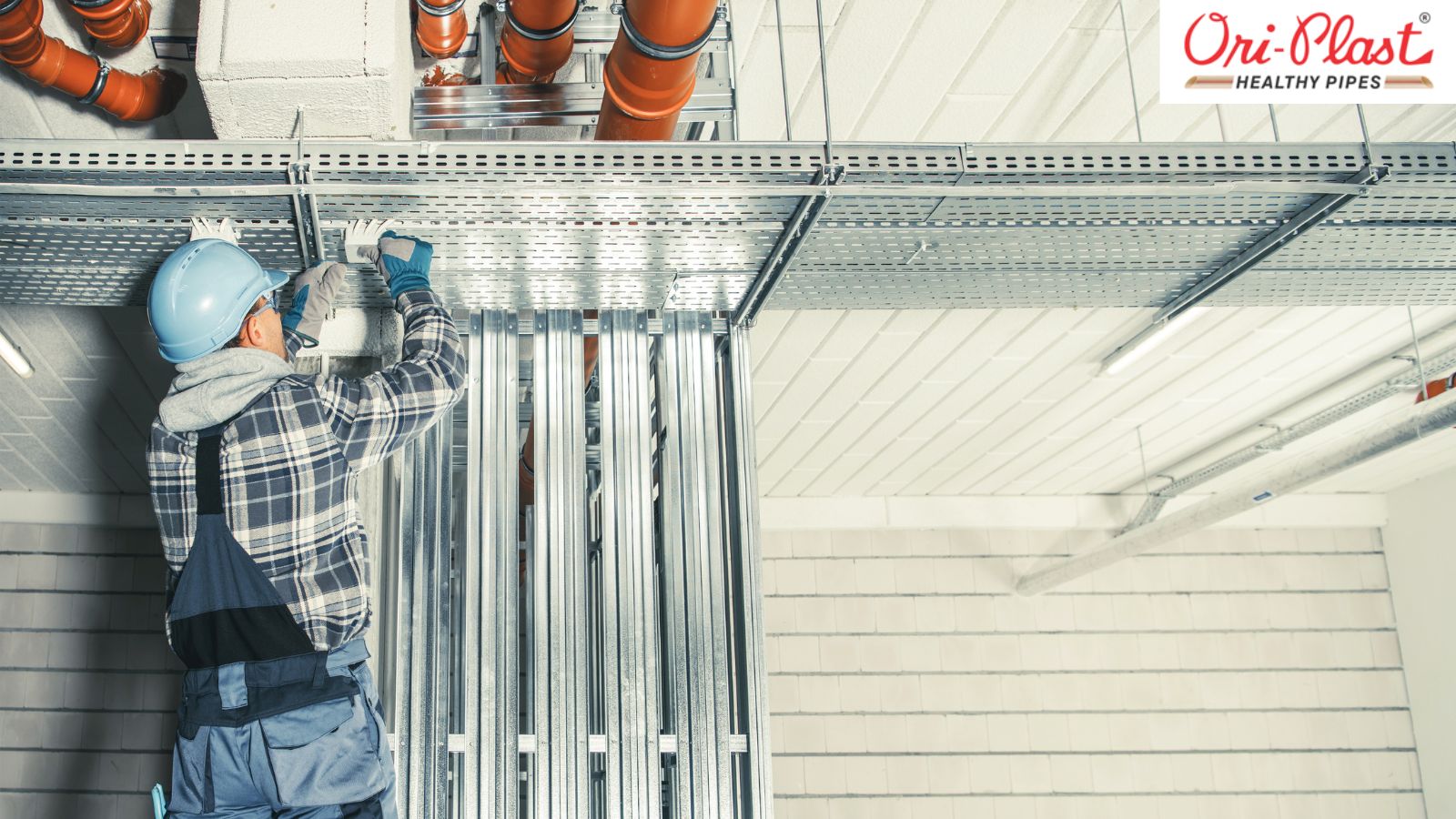Water pipe design for high-rise buildings has become increasingly prevalent in urban areas around the world.
These tall structures pose unique challenges when it comes to the design and implementation of various building systems, including the water supply and distribution system.
Efficient and effective water pipe design is crucial for ensuring a reliable water supply to all floors of a high-rise building while maintaining adequate water pressure and addressing the specific needs and constraints of such structures.
Water Pipe Design for High-Rise Buildings
Water Demand Estimation:
The first step in designing a water pipe system for a high-rise building is to estimate the water demand.
This involves calculating the expected water consumption on each floor, considering factors such as the number of occupants, fixtures (toilets, sinks, showers), and any specific water-intensive activities within the building.
An accurate estimation of water demand is essential for determining the pipe sizes, pressure requirements, and pump capacities necessary for the system.
Pressure Considerations:
Maintaining adequate water pressure throughout a high-rise building is a critical aspect of the water pipe design.
Pressure decreases as water travels vertically due to friction losses and elevation changes.
Therefore, it is necessary to install pressure-boosting equipment, such as pumps or pressure regulators, at appropriate intervals to ensure adequate pressure on each floor.
A well-designed pressure-boosting system will provide consistent water pressure, preventing issues like low flow rates, weak shower sprays, or incomplete flushing of toilets.
Pipe Sizing:
Selecting the correct pipe sizes is crucial to achieving optimal water flow and pressure within a high-rise building.
Pipe diameter depends on the anticipated water demand and the available pressure.
Larger diameter pipes allow for higher flow rates and minimize pressure losses due to friction.
It is common to use a decreasing pipe size as water travels vertically, starting with larger pipes at the building's base and gradually reducing sizes as the elevation increases.
This approach helps maintain adequate pressure and flow on upper floors while optimizing material and installation costs.
Materials and Corrosion Protection:
Choosing the right materials for water pipes is essential for ensuring long-term durability and water quality.
Common pipe materials include copper, galvanized steel, stainless steel, and various types of plastic (e.g., PVC, CPVC, PEX). Factors such as water quality, pressure, and cost need to be considered when selecting materials.
Additionally, implementing proper corrosion protection measures, such as coatings or cathodic protection systems, can extend the life of the pipes and minimize maintenance requirements.
Backflow Prevention:
Backflow prevention is crucial in high-rise buildings to prevent contamination of the water supply.
Backflow occurs when the direction of water flow is reversed, allowing non-potable water or other substances to enter the drinking water system.
High-rise buildings often incorporate multiple water uses, such as fire sprinkler systems or HVAC cooling towers, which can increase the risk of backflow.
Implementing backflow prevention devices, such as check valves or reduced pressure zone (RPZ) assemblies, is vital to protect the water supply and ensure its safety.
Fire Protection Systems:
High-rise buildings require robust fire protection systems, including fire sprinklers and fire hydrants.
These systems typically have dedicated water supply lines, separate from the regular domestic water supply.
The design of fire protection systems must comply with local fire codes and regulations.
It is essential to coordinate with fire protection engineers and ensure that the fire protection system's water demands are adequately met without compromising the building's regular water supply.
System Redundancy and Resilience:
High-rise buildings should have redundant water supply systems to ensure resilience in case of failures or maintenance activities.
Multiple water supply sources, such as municipal water connections, on-site storage tanks, or even well systems, can provide backup options. By incorporating redundancy, the building can maintain water availability during emergencies, maintenance shutdowns, or unexpected water supply disruptions.
Accessibility and Maintenance:
Designing water pipe systems for high-rise buildings should consider accessibility for maintenance and repairs.
Incorporating access panels, valves, and serviceable connections at strategic locations makes it easier to isolate sections of the system for maintenance or address any issues that may arise.
Additionally, implementing a comprehensive maintenance plan, including regular inspections, cleaning, and testing, is crucial to ensure the long-term performance and reliability of the water pipe system.
Sustainability Considerations:
In modern high-rise building design, sustainability is a key consideration. Water pipe design can contribute to sustainable practices by incorporating features such as water-saving fixtures, rainwater harvesting systems, or greywater recycling systems.
These initiatives can help reduce the building's overall water consumption, decrease reliance on external water sources, and minimize the environmental impact of the water supply system.
In conclusion, water pipe design for high-rise buildings requires careful consideration of factors such as water demand estimation, pressure requirements, pipe sizing, materials, backflow prevention, fire protection systems, system redundancy, accessibility, maintenance, and sustainability.
By addressing these considerations during the design phase, engineers can ensure a reliable and efficient water supply system that meets the specific needs of high-rise buildings, providing occupants with safe and adequate water resources throughout the structure.




